Published August 7, 2025 02:06PM
Destinations & Things To Do
The Best Sports Bras for Summer 2025
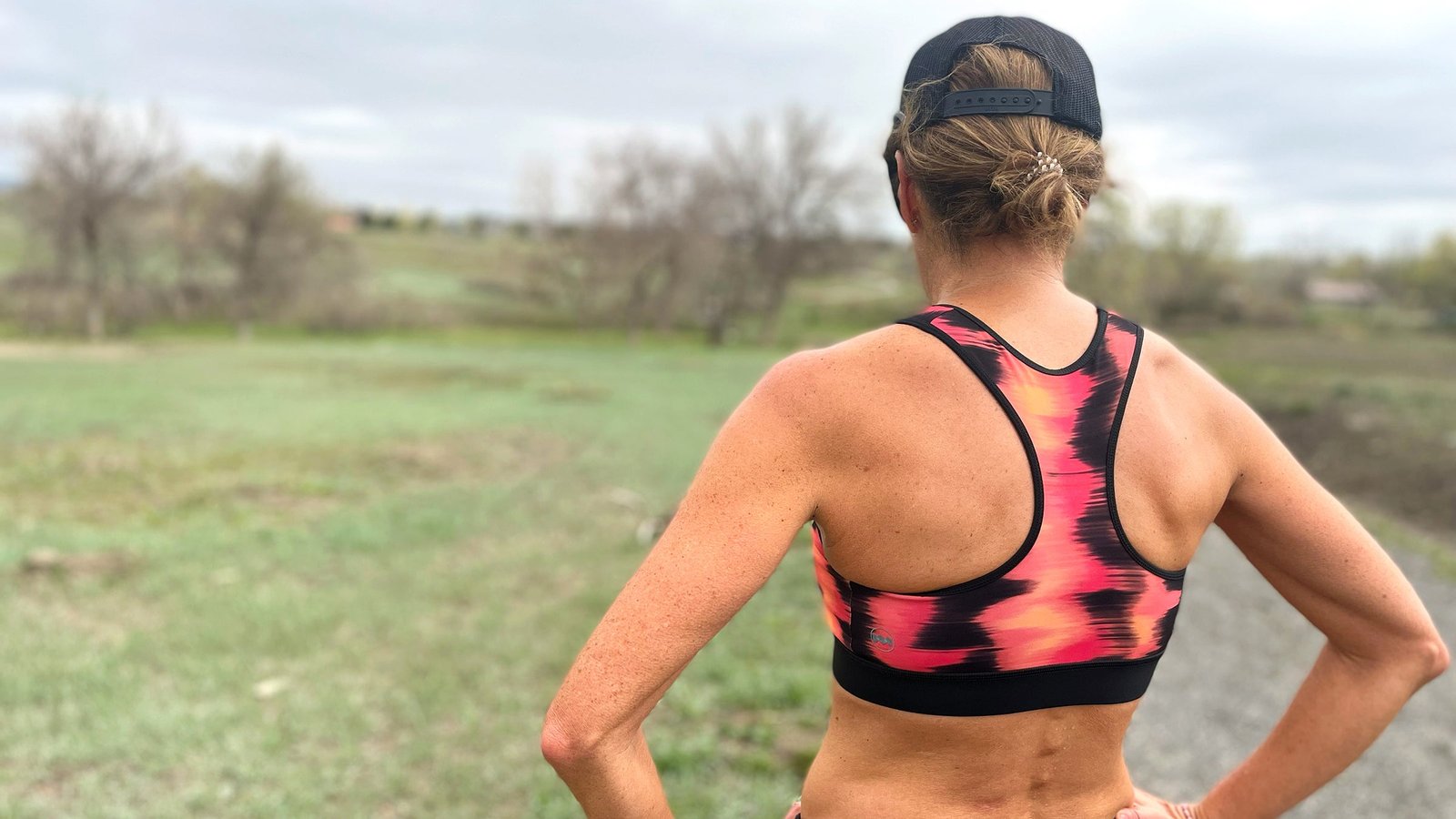
If you buy through our links, we may earn an affiliate commission. This supports our mission to get more people active and outside.Learn about Outside Online’s affiliate link policy
Eleven testers spent hundreds of hours working out in dozens of different sports bras to find the best-performing picks for every type of activity.
(Photo: Lisa Jhung)
Every woman is built differently and has a different idea of what makes the perfect sports bra. But every woman wants (and deserves) a sports bra that is comfortable and supportive, and lets her do activities with zero distraction. In light of that, we had a team of testers—all different sizes—try more than 30 of the best sports bras while hiking, climbing, practicing yoga, running, weightlifting, and more to find the models that delivered the best performance and comfort for a variety of different types of bodies, conditions, and activities.
Update April 2025: We’ve replaced the sports bras in four categories, added three new categories (best for summer, best for wearing a pack, and best simple running bra) and changed the categories of two we carried over from the fall round-up.
Best Sports Bras: At A Glance
Be sure to also check out our picks for the best women’s running shirts and tank tops.
The Best Sports Bras
(Photo: Courtesy Nike)
Best Value
Nike Swoosh Medium Support
Sizes: XXS–XXL
Pros and Cons
⊕ Fixed cups mean no pads to lose
⊕ Durable, long-lasting comfort
⊗ Pads, if you’re not a fan of them
One tester has been wearing an earlier version of this sports bra for close to 20 years. “It’s been all over the world while keeping me comfortable running, cycling, hiking, Nordic skiing, etc.,” she says. The simple, pull-on style bra wicks sweat and remains comfortable for hours. The newest version of this do-anything, durable bra comes with light padding built in (no slipping, no losing the padding in the wash), and is made with sustainable, recycled polyester materials. Its $40 price point makes it among the least expensive sports bras out there, and while it’s classified as “medium support,” it can function as high support across a range of activities for smaller chest sizes. It also lasts for-e-ver.
Best for Large Chests
Brooks Crossback 2.0
Sizes: 30–40 band, AB–DDE cup
Pros and Cons
⊕ Extremely comfortable
⊕ Molded cups stay put
⊗ Only medium impact for the largest of chests
The Brooks Crossback 2.0 bra is not the absolute most supportive sports bra for large chests during the highest impact activities, but for virtually everything else, we loved its ability to support us comfortably. While most sports bras intended for bigger chests achieve support by either compressing tightly or encapsulating with stiff materials, zippers, and/or burly fasteners, the Crossback 2.0 utilizes strategic engineering—reinforced materials in the shoulder straps and chest band—and a wide range of size options for an almost custom fit. Testers loved how this bra’s smooth, flat crossback straps didn’t dig into shoulders and worked great under a backpack, as well as the lack of irritating seams and the soft but effective encapsulation.
“This works nicely for medium-impact activities without smashing you to death,” said a tester. “Love the snug fit of the material, but not snug as in too tight,” said another. “I can’t say enough,” gushed yet another. “I’m obsessed with this bra and how this bra performs and that it never chafes me at all.”
Our team wore this sports bra skiing, hiking, weightlifting, cycling, and running, and only one tester craved more support while running. It also dries quickly from sweat or after washing and is comfortable during prolonged wear.
(Photo: Courtesy Patagonia)
Best for Hot Weather
Patagonia Live Simply Bra
Sizes: XXS–XL
Pros and Cons
⊕ Minimal and comfortable
⊕ Dries extremely quickly
⊗ Can fit a little loose under the arms
We’ve worn this bra hiking in 106-degree heat, sweaty weight-lifting sessions, running in all sorts of weather, and jumping in and out of lakes. This great sports bra remained comfortable throughout all of those athletic activities and even while working at a desk for hours.
Its bonded seam construction lies flat and smooth with zero irritation, and the extremely lightweight, soft, 100-percent polyester tricot fabric dries ridiculously quickly. We appreciated that, along with the anti-microbial treatment (HeiQ Mint) that combated odors when we kept the bra on after workouts. Because it doesn’t contain Spandex, the comfortable sports bra isn’t as supportive as some others, but it also doesn’t stretch out as much. It’s best for low-impact, or any activity for A to C cups.
Best for High Impact
Rabbit UtiliBRA-vo
Sizes: XS–XL
Pros and Cons
⊕ Über-secure phone pocket
⊕ Classic racerback fit
⊗ Not the most breathable
If you love classic racerback bras, add a few of these to your underwear drawer. Chances are good they’ll fit and support you well, as one of our testers raved: “The fabric hits a sweet spot of compression that I think will please 85 percent of runners—not too much, not too little.” This sports bra also has the most secure back phone pocket we’ve ever used, without being over-designed. “Most phone pocket bras try to be all fancy and featured and space-agey,” another tester said. “This is the first one I’ve tried that’s basically just a regular old racerback, both in terms of fit and looks.” The polyester-spandex fabric is slightly thicker than the other favorites, making it a great sports bra for high-impact activities year-round.
(Photo: Courtesy Janji)
Best for Wearing on Its Own
Janji Pace Sports Bra
Sizes: XXS–XXXL
Pros and Cons
⊕ Best range of sizes among pull-over bras
⊕ Unique, flattering and supportive straps
⊗ Removable pads come out in wash
This seemingly simple sports bra has design details we fell in love with—a flattering neckline with double straps, positioned narrower than most, that weave between each other when they cross mid back. This great sports bra proved supportive enough even for C- to D-cup testers doing high-impact activities like running and jumping. “Nice encapsulation and I love the cross back with support!” said one. “You don’t usually get ‘cute’ with ‘supportive.’” We wore this skate skiing, running, cycling, and, when a tester couldn’t find her bikini, at swim lessons with her son. This bra proved comfortable and up to the task for all activities.
Best Adjustable Fit
Tracksmith Allston Adjustable Bra
Sizes: XS–L
Pros and Cons
⊕ Adjustable shoulder straps and chest strap
⊕ Convertible to racerback
⊗ Clip can be felt in racerback mode
This sports bra is adjustable three ways: the chest band has three clips for dialing size around the ribcage, the shoulder straps are length-adjustable, and the bra can convert to racerback via a clip in the middle of the back, which puts it in high-impact-support mode. The racerback clip can be switched back and forth during one workout. “I love the adjustability and the smooth fabric,” said a tester who wore the comfortable sports bra while hiking, biking, and running. “It’s a great bra for someone who might end up wearing a sports bra all day because of logistics, but who wants to ease off the intensity for aprés workout.” The Allston Adjustable is made of Tracksmith’s luxuriously smooth nylon-elastane blend, with interior cups lined with nylon-elastane blend powermesh, which enhances compressive support.
(Photo: Courtesy Under Armour)
Best for Low Impact
Under Armour UA Infinity 2.0 Low
$35 at Under Armour $35 at Al’s
Sizes: XS–XL, Cups A–C and D–DDD
Pros and Cons
⊕ Built-in padding doesn’t come loose
⊕ Soft, comfortable, breathable
⊗ Can be hard to find a perfect fit
This good-looking, lightly padded sports bra is offered at a steal of a price. We loved how there aren’t any irritating seams and that the injection-molded padding’s strategic patterning gave the bra a lightweight, breathable feel. We found the bra dried quickly even after working up a big sweat, which we loved for keeping us from feeling gross underneath our clothes when running errands on the way home from a workout.
The pullover design and lack of a clasp on the backside makes this a great choice for workouts that include mat work, like belly-up core work, Pilates, and yoga moves. And the mesh panel on the back “adds breathability without any distractions,” said a tester.
Not only does the built-in padding eliminate the problems of losing a pad in the washing machine or having to uncrumple removable pads every time we put on the bra (truly, the worst), but we found the shape flattering and not excessive. Note that some testers found that the material buckled on the sides—although with so many size options, they thought they could likely find an ideal fit with a different size/cup combination.
Best for Wearing With a Pack
Oiselle Flyout Bra
Sizes: 2–14
Pros and Cons
⊕ Wide, flat seams remain comfortable under a vest or pack
⊕ Full coverage provides modesty
⊗ Thicker material can feel warm
The Oiselle Flyout Bra has been a favorite among testers for its ability to carry a phone comfortably and securely in the mesh pocket midback. But we also love this sports bra for its wide, flat shoulder straps that stay comfortable under fully loaded hydration vests and backpacks. We’ve worn this bra for long days on the trail with a hydration vest and have never experienced chafing. The wide chest band and shoulder straps provide ample coverage and combine with compressive fabric for support, even for our large-chested testers. We love that this bra comes in a wide range of sizes, like women’s dress clothes, so you can find a perfect fit (use the size guide on the Oiselle website to help).
Best for Carrying a Phone on the Run
Rabbit Strappy Pocket Bra
$55 at Rabbit $55 at Running Warehouse
Sizes: XS–XL
Pros and Cons
⊕ Carries a phone midback
⊕ Cute enough to wear on its own
⊗ Thin shoulder straps can dig in under a pack
The Rabbit Strappy Pocket Bra has become our lead tester’s go-to for travel. It’s a simple, good-looking sports bra that carries a phone or hotel key card easily and comfortably, and it packs down small, especially with the pads removed. The bra also stays put while diving into bodies of water (ocean, lake) post-run and dries fairly quickly afterward, ready for the next outing. The thin shoulder straps and lower neckline give the bra a stylish, flattering appeal while still providing support and coverage. The next-to-skin liner, made from a material that uses recycled coffee grounds, feels cool, helps control odor (another travel bonus), and helps the bra dry quickly.
Best Simple Running Bra
Janji Infinity Sports Bra
Sizes: XXS–XXXL
Pros and Cons
⊕ Reversible
⊕ No clasps on backside
⊗ Doesn’t dry as quickly as some others
There is something to be said for a simple, no frills sports bra—no pads, no clasps, just a traditional pullover racerback. The Janji Infiniti Bra is just that, and testers appreciated its “no fuss” functionality. The lack of clasps on the back make this a good bra for doing mat work: stretching and exercising on your back after a run, or for activities like yoga and Pilates. One tester said she’s looking forward to wearing this while on an SUP or even swimming, while another said the full-coverage cut (it effectively covers side-boob, for most) “is appropriate for stripping down in front of strangers.”
We love that this bra is reversible. The triple-layer construction of nylon/spandex with a polyester mesh sandwiched between the two color options provided enough compressive support for all but our largest-chested runners. Those three layers also make the bra take a bit longer than other bras to dry from sweat or while air-drying after washing. But for two bras in one, we’ll take it.
How We Tested Sports Bras
- Number of testers: 11
- Number of sports bras tested: 22
- Hours working out in test bras: 500
- Toughest testing conditions: Two-plus hours whitewater paddling and then hiking from the bottom of the Grand Canyon to the South Rim while carrying a full backpack full of gear. Close second: Downhill skiing with a toddler.
We wore these sports bras for running, cycling, cross-country skiing, downhill skiing, yoga, hiking, dog walking, camping, and working at a desk. Every tester wears a different size sports bra, ranging from A to DDD cups. If at least two testers agreed that a bra was comfortable and functional, it made our short list. Then we narrowed down the contenders based on functionality for various sports, style, and price.
Meet Our Lead Testers
Lisa Jhung lives and works in Boulder, Colorado, where she writes, edits, and tests gear by doing a variety of outdoor winter sports: running (road, trail, and full-on mountain), Nordic skiing, snowboarding, dog-walking, etc. She also does yoga and lifts weights, sometimes by carrying flagstones around her yard and doing overhead squats and chest presses with a digging bar. She likes to get sh** done while strength training.
How to Choose the Best Sports Bras
When shopping for the best sports bras for you, you need to consider four factors: intended usage, comfort, support, and breathability.
Usage
Are you looking for a good sports bra to wear on its own or under your clothes? Will you be wearing it with a running hydration pack or hiking backpack? Do you want to be able to do yoga, Pilates, or other exercises on your back (and so, don’t want clasps or hooks back there)? Do you need your sports bra to carry your phone (or do you always wear a pack or pockets elsewhere)?
Comfort
Comfort is personal. Nothing can replace trying on the sports bra to ensure it fits your body and the fabric feels good against your skin. Each brand sizes their sports bras differently, so be sure to try on a range of sizes.
Support
When it comes to support, different categories like “low impact” and “medium support” can be confusing because different brands define them in different ways, and the amount of support needed for various activities completely varies by the individual. In general, bras marketed for low-impact activities like yoga, hiking, or cycling will offer less support and technical features than those for high-impact activities, like running or HIIT classes. On the flip side, sports bras designed to offer higher support may be less breathable and more constricting.
If you have a small cup size, you may find that low- and medium-support sports bras work perfectly well for high-impact activities, but women with larger cup sizes often need those “high support” bras even for some low-impact activities. Whatever you choose, know that the sports bra’s underband—the most important part for support—should fit securely but not so tightly that you can’t breathe. (Studies have shown that tight sports bras can restrict breathing and affect running performance.) The straps should not dig into your skin or leave red marks when you take the sports bra off.
Breathability
Too much sweat accumulation on a sports bra is not only uncomfortable but unhygienic, trapping bacteria on your skin and back. Sport-specific fabric blends—often made with polyester, nylon, or merino wool—should have strong moisture-wicking properties, and sports bras made of thinner fabric will allow more heat and perspiration to pass through.
Destinations & Things To Do
PCT: A Game of Risk

June 2 – 6: Big Bear Lake to Wrightwood
144km and 3721m
“He’s not vegan, he’s just Canadian” Bug, PCT hiker class of 2025.
Danger, Danger!
It was June 2nd. After spending four days in a four star resort attending Contact in the Desert, I was starting to miss the trail. After packing up our suite, me and my dad jumped in a rental car and drove up to Big Bear Lake. I didn’t want to fall too far behind, and I had no guilt about skipping this section. As luck would have it, right as we parked at the highway 18 trailhead, Green Man and Snake Cuddler emerged from the forest. So instead of beginning my hike that afternoon, we decided to celebrate the serendipitous reunion. We piled into the car, and went to the local brewery for lunch. After bidding farewell to my dad, I spent the rest of the day relaxing with other hikers at an AirBnB. It was exactly the social scene I needed.
We stayed up late, and had some lively discussions in the hot tub. At one point a young woman sat down, and started up a new subject of conversation.
“Have any of you had more intrusive thoughts now that you’re on trail?”
This was an intriguing question for me and I thought about how in my own experience I’d had these thoughts in overly normalized situations involving high risk (i.e. driving on a fast highway or standing beside large cliffs). She then explained that earlier she had been hiking with both her earbuds in, and stepped right over a Rattlesnake. Now she was feeling a little jumpy on trail. Being the socially “aloof” person that I am, I made a horrible mistake. I showed her my close-up Rattlesnake footage. I’d wanted to convey my methodology for being safe around snakes, but before I could explain I could see my audience was shook. The video had seemly triggered this poor woman, and now I was getting this stare that read, “What is wrong with you?”
Needless to say, we didn’t end up having a very fruitful conversation. The impression was made, and now I was just a crazy man who plays with dangerous animals. What a shame. In intense situations I’ve learned how to keep my composure and maintain my critical thinking. This has come with training, exposure and time. Through my career and past times I have developed a process of hazard assessment and risk management. Not to mention I absolutely adore snakes. But, I recognize this doesn’t describe every thru-hikers background.
I have an “interesting” relationship with risk. Photo from my descent of Mt. Assiniboine in September 2023.
Perhaps that’s part of the potential personal growth that can come from a thru-hike. You have nothing but time and exposure out here. You can find your personal limit and have the space to push past it. Just taking the necessary time off to thru-hike could be considered a big risk. The empowerment that comes from facing fear is worth it. If you are driven enough to hike this trail in its entirety, then you could probably overcome a fear of snakes too! No one said thru-hiking was comfortable.
Hotsprings and Snakes!
While I was feeling frustrated after that evening’s disastrous conversation, that feeling was quickly overshadowed by the experiences on trail. I was heading up into the San Bernardino Mountains and traversing west toward the San Gabriel Mountains. It was a long stretch that didn’t take me much further north, but a few landmarks along the way were well worth the visit. The first was the Deep Creek Hotspring.
I must have spent at least three to four hours lounging around there. One of the locals remarked that the site had been visited by humans for thousands of years, and the smooth hand holds around the rocks definitely backed up that statement. The hot springs feed numerous pools that surrounded a deep bend in the river. Someone had even taken the liberty of setting up a slack line across the deep end of the river, which I had fun trying to cross while also cooling off. A school of catfish swam around unperturbed by the many people splashing about. It was a magical spot. But I had my shirt off and my guard down for too long, and eventually I began to feel the burn. By that time unfortunately it was too late and I was terribly sunburnt.
That day turned into my first big night hike. The trail takes on a new life at night. So many critters came out at dusk and the moon kept the trail bright. As the sun set there were horned lizards, a rosy boa, and garter snakes. By night there were toads, and all kinds of insects. That plus the cool breeze which I throughly appreciated. After the absolutely cooking hot afternoon I had, it was pretty sweet. Already I was starting to look forward to visiting McDonald’s the next day in Cajon Pass.
The next morning I woke up super early and hiked along the edge of Silverwood Lake. I was feeling drained of energy, as my body reacted to the sunburn. Soon as the sun was shining overhead, it was unbearablely hot again. I hid under my umbrella, and quickened my pace. The winding trail led high over a ridge and then back down into a small canyon. Those last two miles before I was dumped out onto Cajon Pass were grueling in the heat with my backpack rubbing the burns on my shoulders. As I drew closer, the sound of the traffic spurred me on. Then I was out. A stream of bumper to bumper traffic raced by at highway speeds. It was a bewildering sight, and I sought refuge under the golden arches.
Bug and Luna were there. It’s funny, but once we had our bags off and had occupied a table, it felt incredibly homely. I stayed there for four hours, ordering multiple rounds of food. Despite my rapidly dwindling energy and the severe pain I was experiencing from my sunburn, I pushed on that evening, crushing out another 9km before reaching the next water cache. I wanted to continue further, but a friendly local came by with a Yeti cooler full of beer and me and another couple hikers hung out with him shooting the shit and enjoying the cold beverages. Either way I’d be in Wrightwood tomorrow, and not having to dry camp that night was also very nice.
My sunburn was starting to blister the next morning. I gently hoisted my bag onto my shoulders but still I was in complete agony. It was a relatively short 19km haul to town due to a trail closure ahead. Gritting my teeth I climbed onto the ridge and then promptly back down into the valley. There was a man there waiting for his daughter who was also hiking. Since she was a ways behind me, he gave me a ride into town while he waited for her. The first thing I did was visit the grocery store, where a hiker hang was developing at the shady picnic tables. I treated myself with a breakfast burrito, a mini watermelon, a pint of ice cream, and a tube of aloe vera skin lotion.
This website contains affiliate links, which means The Trek may receive a percentage of any product or service you purchase using the links in the articles or advertisements. The buyer pays the same price as they would otherwise, and your purchase helps to support The Trek’s ongoing goal to serve you quality backpacking advice and information. Thanks for your support!
To learn more, please visit the About This Site page.
Destinations & Things To Do
Indonesia’s New Tourism Era Redefining Travel with Sustainable Tourism Initiatives on Islands Like Komodo, Maluku and Other Hidden Gems

Published on
August 8, 2025 |
By: TTW News Desk
Indonesia, a nation made up of over 17,000 islands, is a treasure trove of stunning landscapes, diverse cultures, and breathtaking natural wonders. While many of its remote islands are still relatively untouched, the country’s tourism strategy remains heavily focused on Bali, Indonesia’s most famous island. Bali’s appeal is undeniable, but the pressures of over-tourism are mounting, highlighting the urgent need for a more balanced approach to tourism development. As Bali faces overcrowding and environmental strain, Indonesia’s lesser-known regions hold the key to unlocking the country’s true tourism potential.
Bali’s Overcrowding Dilemma
Bali has long been the jewel of Indonesia’s tourism industry. Its unique blend of rich culture, serene beaches, vibrant nightlife, and lush landscapes attracts millions of visitors each year. However, the island’s popularity is becoming a double-edged sword. As the number of tourists continues to grow, Bali struggles to manage the influx. Overcrowded attractions, increased waste, and a higher cost of living are just a few of the challenges facing local communities and the tourism sector. Bali’s infrastructure, while iconic, has not kept pace with its rising visitor numbers, causing logistical headaches and environmental degradation. It’s clear that continuing to concentrate the country’s tourism efforts on one island is no longer sustainable.
Beyond Bali: The Hidden Treasures of Indonesia
While Bali grabs most of the attention, many of Indonesia’s other islands remain underdeveloped yet brimming with unique offerings. Places like Maluku, Komodo Island, and the remote shores of Seram Island offer experiences that are far removed from the tourist-packed beaches of Bali. Maluku’s rich history and biodiversity make it an ideal destination for eco-tourism. The pristine waters, coral reefs, and cultural diversity make it a hidden gem for those seeking authentic experiences.
Komodo Island, home to the legendary Komodo dragons, is another destination that offers a once-in-a-lifetime opportunity to connect with nature. The island’s isolation and rugged landscapes are perfect for eco-tourism enthusiasts. However, despite their potential, these regions face a significant barrier to development—poor infrastructure. With limited flight connections, lack of quality accommodations, and inadequate transportation networks, reaching these places is challenging, which deters many travelers.
The “New Balis” Strategy: A Vision for Regional Tourism Growth
In an attempt to alleviate the pressures on Bali, Indonesia has introduced the “New Balis” initiative. This strategy aims to spread tourism across the archipelago and create new hotspots that can share the economic benefits. While the idea of “New Balis” holds promise, the execution has been slow. Many of the less-visited regions have yet to see substantial infrastructure investments or meaningful policy support. Without reliable transportation, good accommodations, and modern amenities, it’s hard to entice international tourists to venture beyond Bali.
Moreover, the initiative suffers from fragmented efforts between government ministries and local authorities. A cohesive, unified approach is necessary to ensure that tourism in these areas is not only possible but sustainable. Despite these challenges, the potential for growth in regions like Maluku, Komodo, and Seram remains untapped, and with the right investments, they could become thriving tourist destinations.
Building a Sustainable Future: A Roadmap for Success
For Indonesia’s tourism diversification to succeed, a more structured and comprehensive approach is needed. The key to unlocking the potential of these hidden destinations lies in building infrastructure—airports, affordable regional flights, and transport networks—that connects these islands to the rest of the world. Additionally, investments in sustainable tourism practices are essential to preserving the natural beauty and cultural heritage of these regions. Local communities must be actively involved in the development process, ensuring that tourism provides long-term economic benefits without compromising the environment or local traditions.
Furthermore, partnerships with international travel agencies and local operators could help promote these lesser-known destinations to global travelers. Highlighting eco-tourism opportunities, wildlife experiences, and cultural immersion could attract the growing segment of travelers who seek authentic, off-the-beaten-path experiences.
Conclusion: Reimagining Indonesia’s Tourism Landscape
As Bali faces the mounting challenges of over-tourism, Indonesia must look beyond its most famous island and tap into the vast potential of its lesser-known regions. With a clear focus on sustainable development, infrastructure improvements, and strategic marketing, Indonesia can diversify its tourism offerings and reduce the strain on Bali. Regions like Maluku, Komodo Island, and Seram have the potential to become the next big tourism hotspots, offering unique experiences and much-needed alternatives to the crowded tourist centers. By redistributing the tourism load, Indonesia can create a more balanced, sustainable tourism model that benefits both travelers and local communities for years to come.
Destinations & Things To Do
Idaho Has Two of America’s Best Travel Destinations
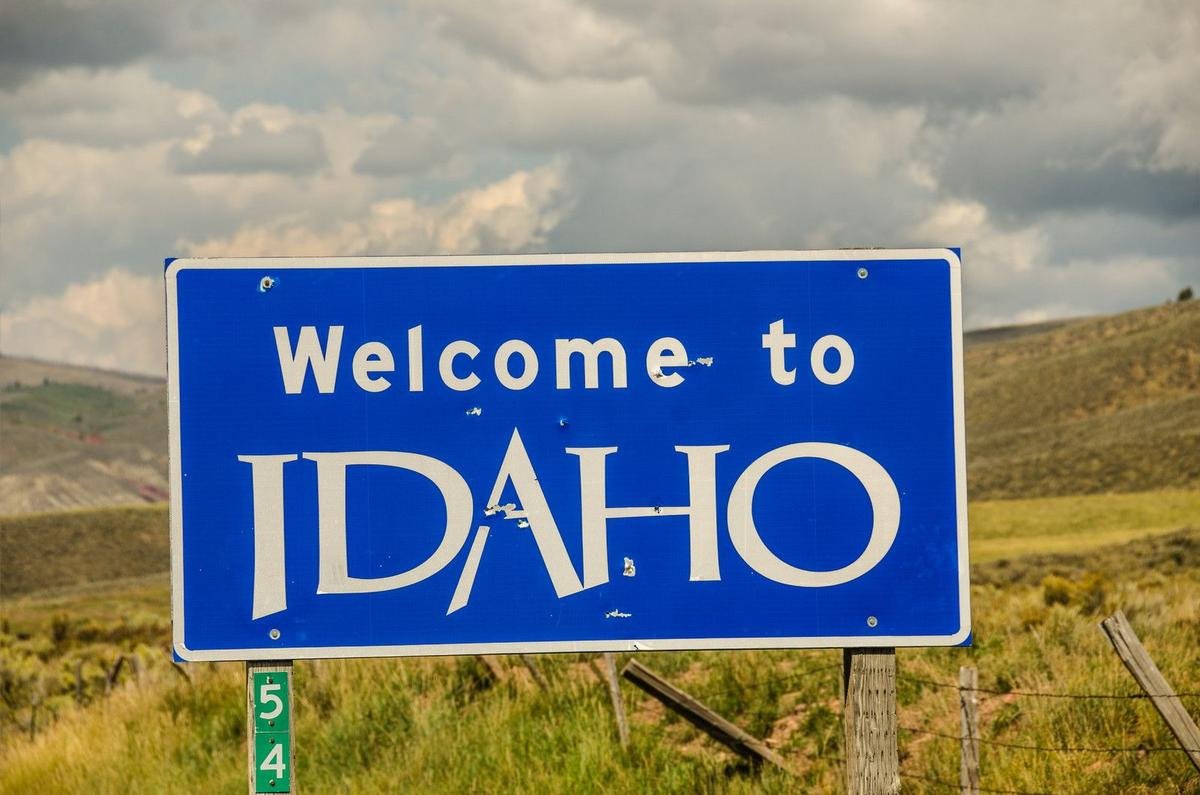
When you think about travel hot spots in Idaho, what are the first destinations that come to mind? We bet they’re NOT the two that recently made a list of the best places to visit in America in 2025!
The Sun Valley-Ketchum area may have come to mind. Not only is the region constantly in the running for “Best Of” lists for winter sports and recreation, it’s been a hot spot for celebrity sightings for decades.
READ MORE: 27 Celebrities Who’ve Been Seen in Idaho & Where They Showed Up
Once upon a time, you’d bump into the likes of Ernest Hemingway and Marilyn Monroe. Today? You’re more likely to see celebrities like Jimmy Fallon and Ali Larter wandering around town.
Matt Winkelmeye, Getty Images
Coeur d’Alene’s another part of Idaho that’s attracted stars like Justin Bieber, Mark Wahlberg and the Kardashians. Sydney Sweeney’s another famous face you may bump into there. She grew up in Spokane and spent plenty of lake days in CDA.
Even though it feels weird putting Boise on the list because we live here, some could argue we belong on that list because The Blue is a major draw for college football fans from around the country.
Loren Orr, Getty Images
While they’re all worth traveling to, World Population Review had something very different in mind when putting together a list of the 200 best places to visit in the United States.
Two Idaho Destinations Named Among Best Places to Visit in the United States
World Population Review picked two Idaho destinations that appeal to recreationists and nature lovers. Their picks? Big Springs in Island Park and the Sawtooth National Recreation Area. In choosing the destinations, they explained:
Idaho is a state perfect for those who love the outdoors! For adventurers looking to take on Idaho, Big Springs has 120 million gallons of water flowing every day and beautiful wildlife views. Additionally, Sawtooth National Recreation Area’s rugged mountain landscape is perfect for hikers and rafters looking for their fill of the great outdoors.
World Population Review also included a “Best Family Travel Destination” for Idaho. This year they chose Silver Rapids Indoor Waterpark at Silver Mountain in Kellogg. You can check out some incredible photos of it below!
KEEP READING: Idaho’s 2 Incredible Indoor Waterparks Must Be On Your Winter Bucket List
Did you know Idaho is home to not one but TWO incredible indoor water parks? They each offer something a little bit different, so scroll through to learn more about what makes them an incredible place to beat the winter blahs.
Gallery Credit: Michelle Heart
-

 Brand Stories3 weeks ago
Brand Stories3 weeks agoBloom Hotels: A Modern Vision of Hospitality Redefining Travel
-

 Brand Stories2 weeks ago
Brand Stories2 weeks agoCheQin.ai sets a new standard for hotel booking with its AI capabilities: empowering travellers to bargain, choose the best, and book with clarity.
-

 Destinations & Things To Do3 weeks ago
Destinations & Things To Do3 weeks agoUntouched Destinations: Stunning Hidden Gems You Must Visit
-

 Destinations & Things To Do2 weeks ago
Destinations & Things To Do2 weeks agoThis Hidden Beach in India Glows at Night-But Only in One Secret Season
-

 AI in Travel3 weeks ago
AI in Travel3 weeks agoAI Travel Revolution: Must-Have Guide to the Best Experience
-

 Brand Stories1 month ago
Brand Stories1 month agoVoice AI Startup ElevenLabs Plans to Add Hubs Around the World
-

 Brand Stories4 weeks ago
Brand Stories4 weeks agoHow Elon Musk’s rogue Grok chatbot became a cautionary AI tale
-

 Brand Stories2 weeks ago
Brand Stories2 weeks agoContactless Hospitality: Why Remote Management Technology Is Key to Seamless Guest Experiences
-

 Asia Travel Pulse1 month ago
Asia Travel Pulse1 month agoLooking For Adventure In Asia? Here Are 7 Epic Destinations You Need To Experience At Least Once – Zee News
-

 AI in Travel1 month ago
AI in Travel1 month ago‘Will AI take my job?’ A trip to a Beijing fortune-telling bar to see what lies ahead | China

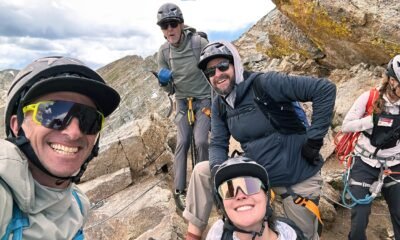

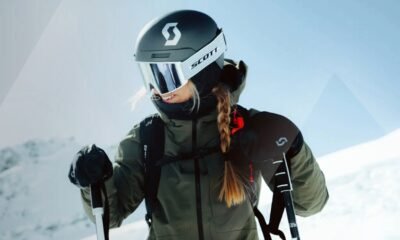





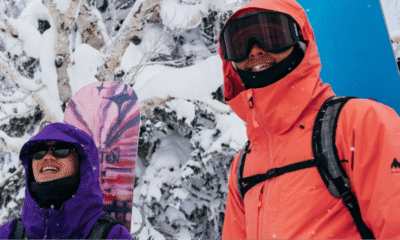

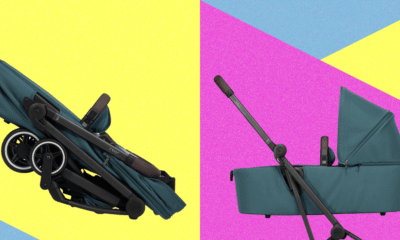

You must be logged in to post a comment Login